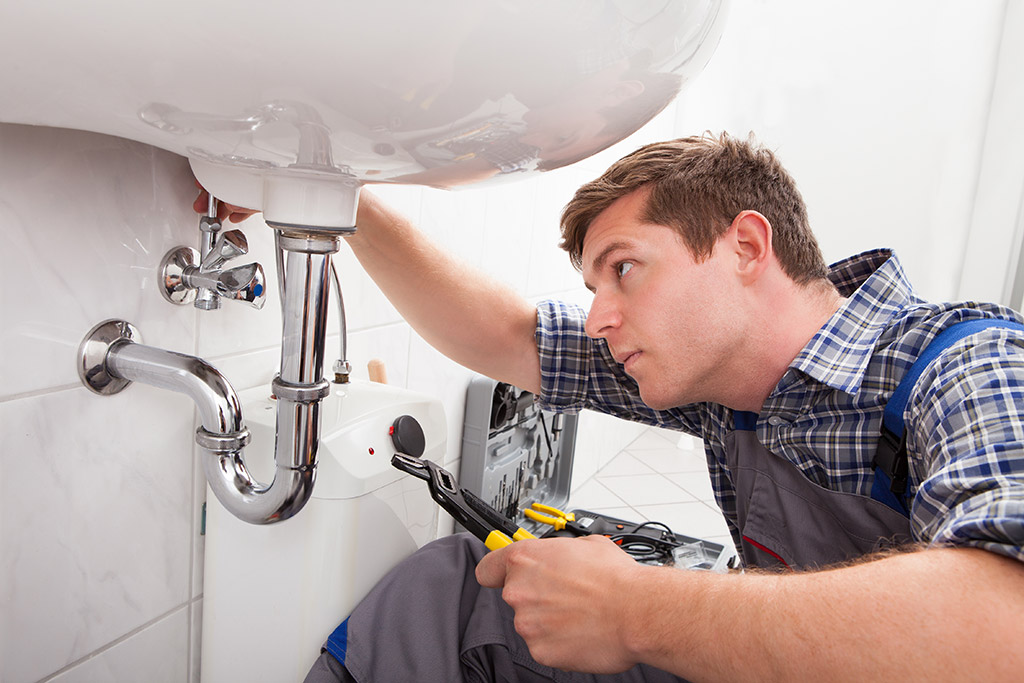A Detailed Guide to Efficient Water Heater Installment for Optimum Performance
Embarking on the task of mounting a water heater is a venture that requires accuracy and an organized strategy for accomplishing optimum performance. As you proceed, the details of connecting water supply lines and setting up trusted electrical or gas links wait for, promising insights into making sure performance and reliability.
Selecting the Right Hot Water Heater

Next, take into consideration the dimension and capacity of the water heating unit. It's vital to evaluate your family's warm water demands, which can vary based on the number of residents and their use patterns. A system that's also little might bring about not enough hot water, while an extra-large version could cause unneeded power intake.
Efficiency ratings likewise play a crucial duty in option. Seek hot water heater with high Power Variable (EF) rankings, indicating remarkable performance and decreased energy usage. Tankless models, though generally much more expensive upfront, offer significant energy cost savings in time because of their on-demand heating capabilities.
Preparing the Installment Location
Prior to setting up a new water heating unit, meticulous prep work of the installation area is essential. It's vital to measure the area very carefully to accommodate the water heating system's dimensions, making sure adequate clearance around the system for reliable operation and servicing.
Check the floor for stability, as the water heater will need a strong, degree surface area to run successfully. If needed, set up a drip pan below the system to catch potential leaks or spills, stopping water damage to the surrounding area.
Additionally, ensure that all necessary devices and products are on hand before commencing the installment. This consists of things such as wrenches, screwdrivers, a degree, and any type of additional equipment needed for safeguarding the heating system and installing. A well-prepared setup location establishes the structure for a successful water heater arrangement, maximizing performance and safety.
Connecting Water Lines
When attaching supply of water lines to your freshly set up water heater, it is crucial to ensure that all links are protected and leak-free to preserve efficient procedure and avoid water damages. Begin by determining the hot and cool supply of water lines. The cool water inlet is normally marked look at this site with a blue tag or a "C", while the warm water electrical outlet is marked with a red tag or an "H".
Usage flexible water my link heating unit ports to promote an easier setup process. Prior to affixing the ports, position a plumber's tape around the threaded ends of the water heating unit's inlet and electrical outlet pipelines.
As soon as links remain in area, gradually switch on the major water supply valve. Inspect each connection for leaks by visually checking and feeling for moisture. Tighten links as necessary, and ensure the stress alleviation shutoff is appropriately mounted, guarding versus too much stress build-up.
Setting Up Electrical or Gas Connections
Properly establishing the electric or gas links for your hot water heater is an essential step to ensure secure and reliable operation. For electrical hot water heater, start by confirming that the electrical circuit works with the heating system's voltage and amperage needs. Ensure the power supply is turned off at the circuit breaker to stop mishaps. Connect the electric cables to the heating unit following the manufacturer's circuitry layout. Normally, this involves attaching the ground wire to the environment-friendly terminal, and the remaining cables to their corresponding terminals, safeguarding each with wire nuts.
For gas water heaters, security is extremely important. Connect the gas line to the water heater utilizing an adaptable gas connector, ensuring it is correctly threaded and secured with pipeline joint compound over at this website or Teflon tape appropriate for gas links.
As soon as connections are made, examine for any type of possible leakages. For gas lines, use a soapy water solution to the joints; bubbles indicate a leak. For electric links, ascertain that all wiring is protected and appropriately shielded, keeping conformity with neighborhood electric codes.
Changing and evaluating for Efficiency
With the electrical and gas links firmly in location, the next action is reviewing the functional effectiveness of your water heater. Begin by thoroughly turning on the water supply and making certain there are no leakages at any of the valves or joints.
Following, do a complete examination to make sure the heating components or burner are working properly. For electric heating systems, use a multimeter to verify if the components are drawing the ideal present. In gas designs, observe the heater fire; it should be steady and blue, suggesting efficient burning.
Adjust the setups as required to eliminate inadequacies. Consider applying insulation steps, such as including a water heating unit covering, to further boost efficiency by reducing warmth loss. Furthermore, examine the anode rod's problem, as a shabby pole can reduce effectiveness and lead to tank rust.
Conclusion
Efficient water heater installation is important for making certain optimum efficiency and power financial savings. Firmly attaching water supply lines and carefully establishing up electrical or gas links minimize potential issues.

Appropriately establishing up the electric or gas links for your water heating system is an essential step to guarantee risk-free and effective procedure. For electric water heating units, start by validating that the electric circuit is suitable with the heating system's voltage and amperage demands. Link the gas line to the water heating unit utilizing a versatile gas port, ensuring it is correctly threaded and sealed with pipe joint substance or Teflon tape ideal for gas links.
Comments on “Relied On Plumbing Services Alabaster AL for All Your Maintenances”